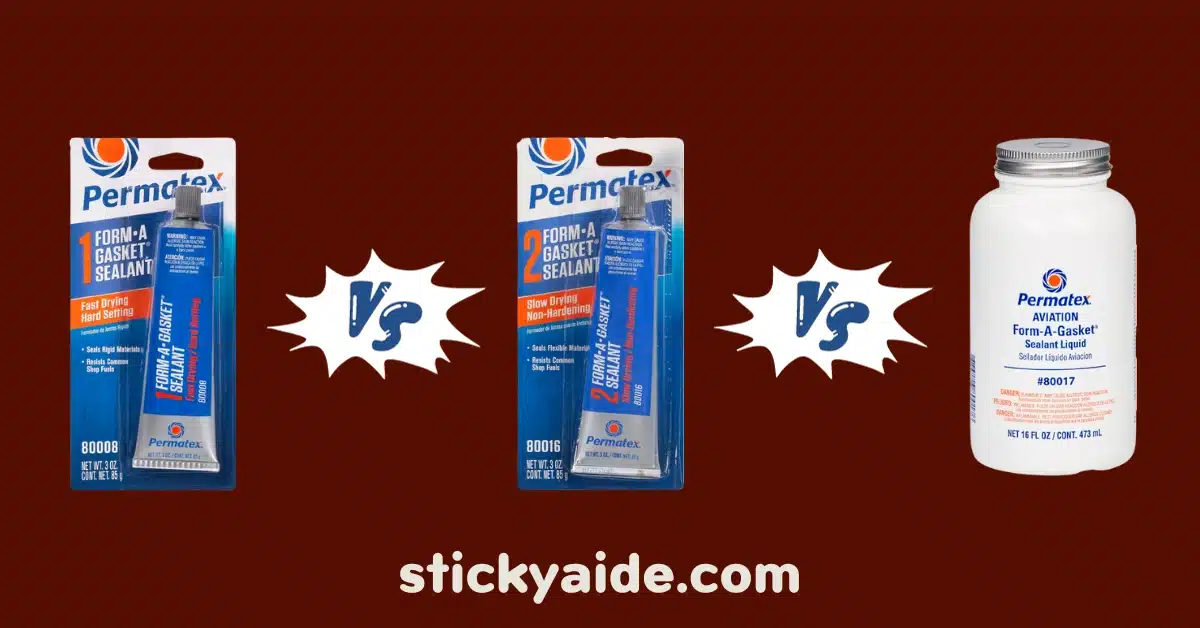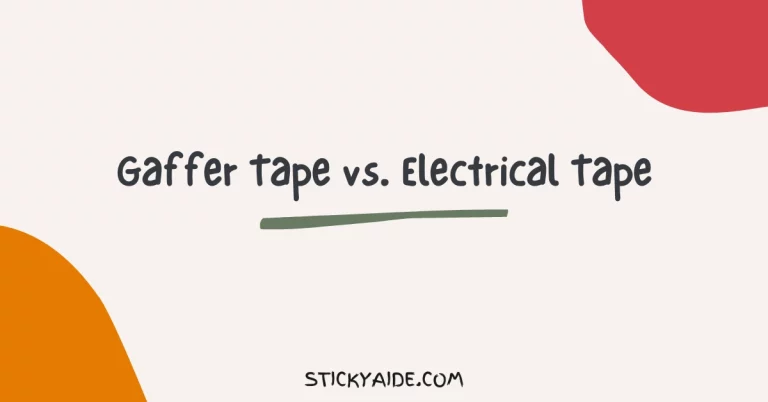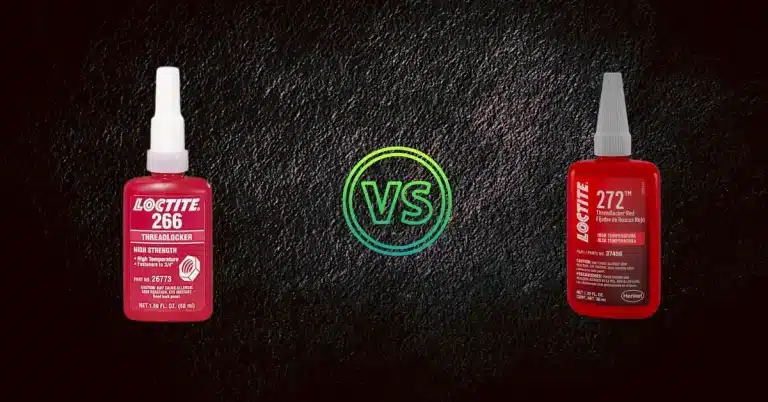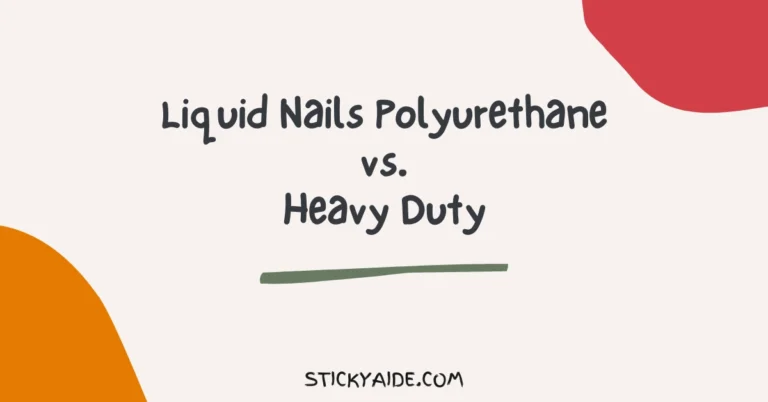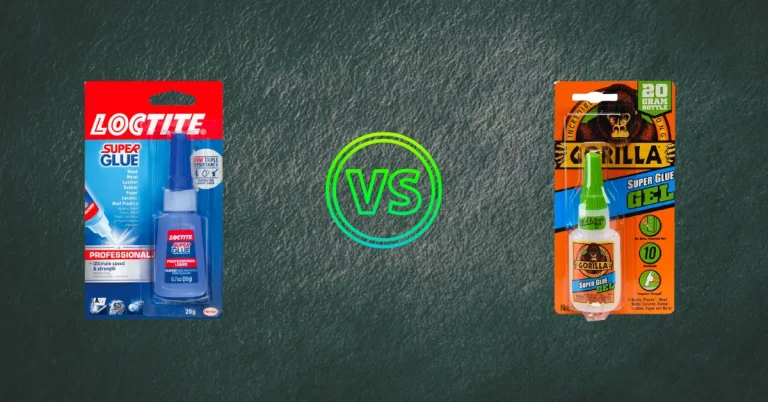Permatex Form A Gasket 1, 2, and 3 are different from each other. If you want to know the best one from these three options, you should know about Permatex Form A Gasket 1 Vs. 2 Vs. 3 first.
Well, Permatex 1 is a fast-drying sealant for threaded joints and rigid materials. Permatex 2 and 3 are slow-drying. They are good for non-hardening applications, whereas Permatex 1 has a hard-setting formula.
To know more about these products, get into the detailed description below.
Read More: Permatex Motoseal vs. Ultra Grey
Permatex Form A Gasket 1 Vs. 2 Vs. 3
About Permatex Form A Gasket 1
Permatex Form A Gasket 1 sealant is a fast-drying and hard-setting product.
It is designed for sealing rigid materials, threaded joints, flanges, and any other places where a permanent seal is required.
It comes in a liquid form. So, it becomes easier to apply to the needed places.
Besides, the product resists common shop and auto fuels. It should be used on the places after cleaning it properly to get a permanent seal.
The gasket sealant can patch holes and joints permanently. The temperature range is -65°F to 400°F (-54°C to 204°C). That means it’s quite suitable for high-temperature applications.
To make a gasket and use it on threaded connections, freeze plugs, and manifold gaskets, this Permatex Form-A 1 is the perfect solution.
Moreover, it is flexible and seals almost anything that makes it versatile. One thing to mention, it doesn’t include a tip. If it does, the application would be much easier and precise.
When you don’t want to go for a chemical gasket, Permatex is here to give you a wide range of gasket sealants.
This Permatex Form-A 1 is one of the good options for sealing pipe threads. It is also effective for water, oil, grease, gasoline, and more.
Overall, to get a permanent and excellent seal, this product is worth it. Store it in a well-ventilated place and you’re good to go.
About Permatex Form A Gasket 2
Permatex Form A Gasket 2 is a slow-drying, non-hardening, and pliable sealant. It is used in aviation as well as automotive applications.
Also, it is designed for sealing cut gaskets on stamped or any other flexible parts.
The temperature range is -65°F to 400°F (-54°C to 204°C). It doesn’t create a permanent seal. So, it’s easy to disassemble when needed.
To use it on valve covers gaskets, thermostat housings, water pumps, and oil pan gaskets, this is one of the best.
Moreover, it resists gasoline, grease, and oil. It is easy to apply because of its liquid formulation. Creating a good seal and no leak is easier with Permatex Form-A Gasket 1.
When you don’t want a chemical gasket, go with this one. It has a wide range of sealants to choose from.
Unlike other RTVs or sealants, you can assemble the components if needed. You can get the assemblies back apart when you want a quick clean-up. That’s the good thing about it.
One tip is to put a thin layer of the product on the coolant hoses before clamping them down. It makes a great difference in the sealing.
Lastly, the product is easy to store. So, you can get one tube and use it for months if you store it properly in a cool and dry place.
Read More: Permatex Ultra Grey vs. Ultra Black
About Permatex Form A Gasket 3
Permatex Form A Gasket 3 is a non-hardening, and slow-drying brush-top sealant. It is for use in aviation and automotive applications too.
It can also resist oil, grease, and gasoline. This is a suitable product for use in various applications like sealing hoses, solid gaskets, close-fitting machined surfaces, and more.
The temperature range is -65°F to 400°F (-54°C to 204°C). So, it is great for these kinds of mechanical and marine low-temperature applications.
When any chemical gasket is not an option, you can go with this product as it’s suitable for both import and domestic vehicles of any model.
The consistency of the sealant is thin. So, it is easy to apply in certain places. But it can get a bit messy. It works the same as advertised.
One trick you can follow is to put a little bit of the product on the radiator and heater hoses to get a perfect seal.
It may not work on brand new hoses most of the time. It is not even necessary to use it on brand-new things.
Instead, it works great on slightly deformed hose. Reusing old gaskets becomes possible because of this Permatex Form A Gasket 3.
Further, it works great on paper gaskets but is not useful for intakes. As it has a thin consistency, this stuff can be a mess if the lid is not properly used.
Make sure you are always being careful with the lid to avoid any mess in your toolbox. It can be hard to clear the mess.
Permatex Form A Gasket 1 vs. 2
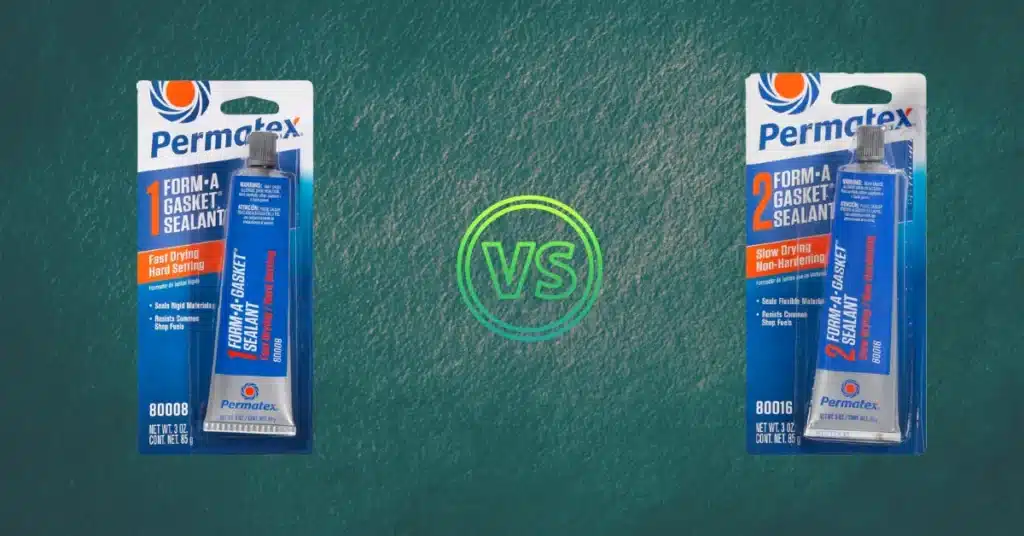
Permatex Form A Gasket 1 is a fast-drying, hard-setting sealant primarily designed for sealing rigid materials, threaded joints, and flanges.
It offers a permanent seal and boasts a temperature range of -65°F to 400°F (-54°C to 204°C).
This product resists common shop and auto fuels, making it suitable for high-temperature applications. However, it lacks a tip for precise application.
On the other hand, Permatex Form A Gasket 2 is a slow-drying, non-hardening, and pliable sealant.
It works well for sealing cut gaskets on flexible parts and allows for easy disassembly when needed.
Similar to Form A Gasket 1, it can resist gasoline, grease, and oil, with a temperature range of -65°F to 400°F (-54°C to 204°C).
This variant is suitable for valve covers, water pumps, and oil pan gaskets and enables quick cleanup by allowing assemblies to be taken apart.
Read More: Permatex the Right Stuff Grey vs. Black
Permatex Form A Gasket 2 vs. 3
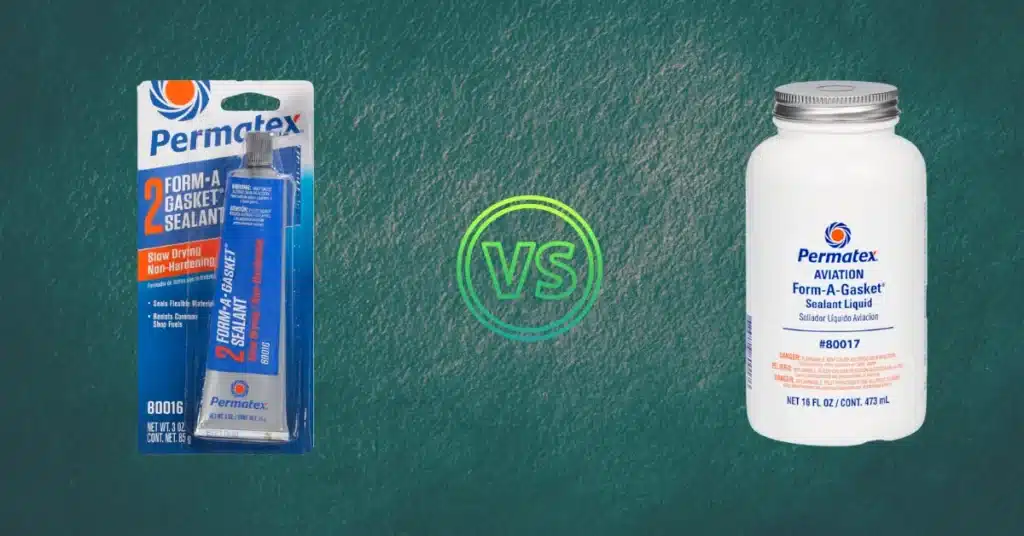
Permatex Form A Gasket 2 maintains its slow-drying, non-hardening characteristics, perfect for sealing cut gaskets on flexible parts and allowing easy disassembly.
Resistant to gasoline, grease, and oil, it caters to various automotive applications, including valve covers and thermostat housings, with a temperature range of -65°F to 400°F (-54°C to 204°C).
On the other hand, Permatex Form A Gasket 3 adopts a non-hardening, slow-drying brush-top sealant approach.
It’s designed for sealing hoses, machined surfaces, and solid gaskets.
This variant also boasts resistance against oil, grease, and gasoline and is suitable for mechanical and marine low-temperature applications, sharing the same temperature range of -65°F to 400°F (-54°C to 204°C).
Permatex Form A Gasket 1 vs. 3
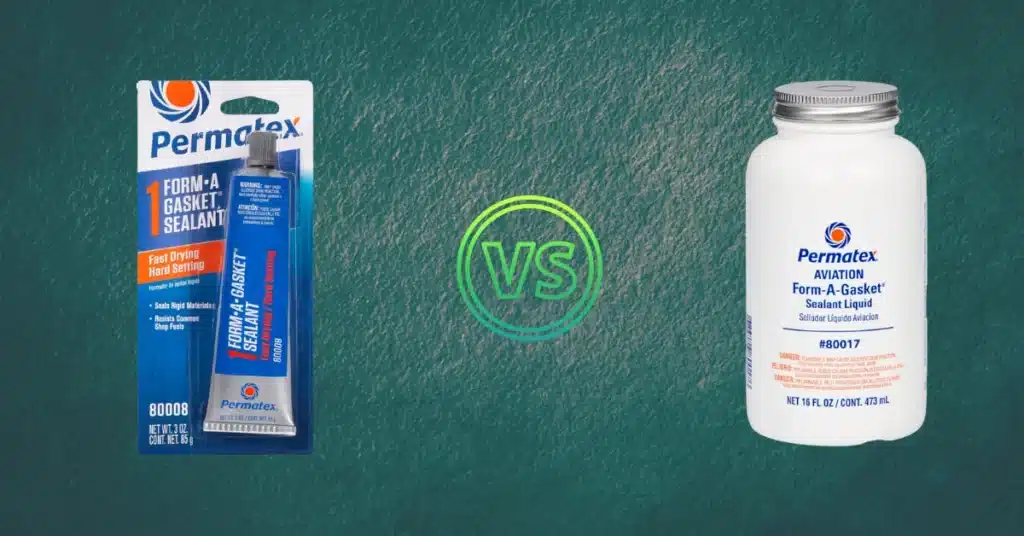
Permatex Form A Gasket 1 retains its fast-drying, hard-setting nature, perfect for sealing rigid materials and threaded joints and providing a permanent seal.
With a temperature range of -65°F to 400°F (-54°C to 204°C) and resistance to shop and auto fuels, it’s versatile for various sealing needs.
Permatex Form A Gasket 3 follows a non-hardening, slow-drying brush-top sealant pattern, ideal for sealing hoses, machined surfaces, and solid gaskets.
It shares similar resistance to oil, grease, and gasoline and suits both mechanical and marine low-temperature applications, aligning with a temperature range of -65°F to 400°F (-54°C to 204°C).
Last Opinion
To know about the three gasket sealants, this article is enough. Here, you get all the necessary information about Permatex Form A gaskets 1, 2, and 3.
According to the Permatex Form A Gasket 1 Vs. 2 Vs. 3 comparison, you get a lot of information that helps to choose the best.
If you want a permanent seal, get the Permatex 1. And for non-hardening tasks, both Permatex 2 and 3 are good options. They are quite similar.
So, to get the best one according to your project’s requirements.

